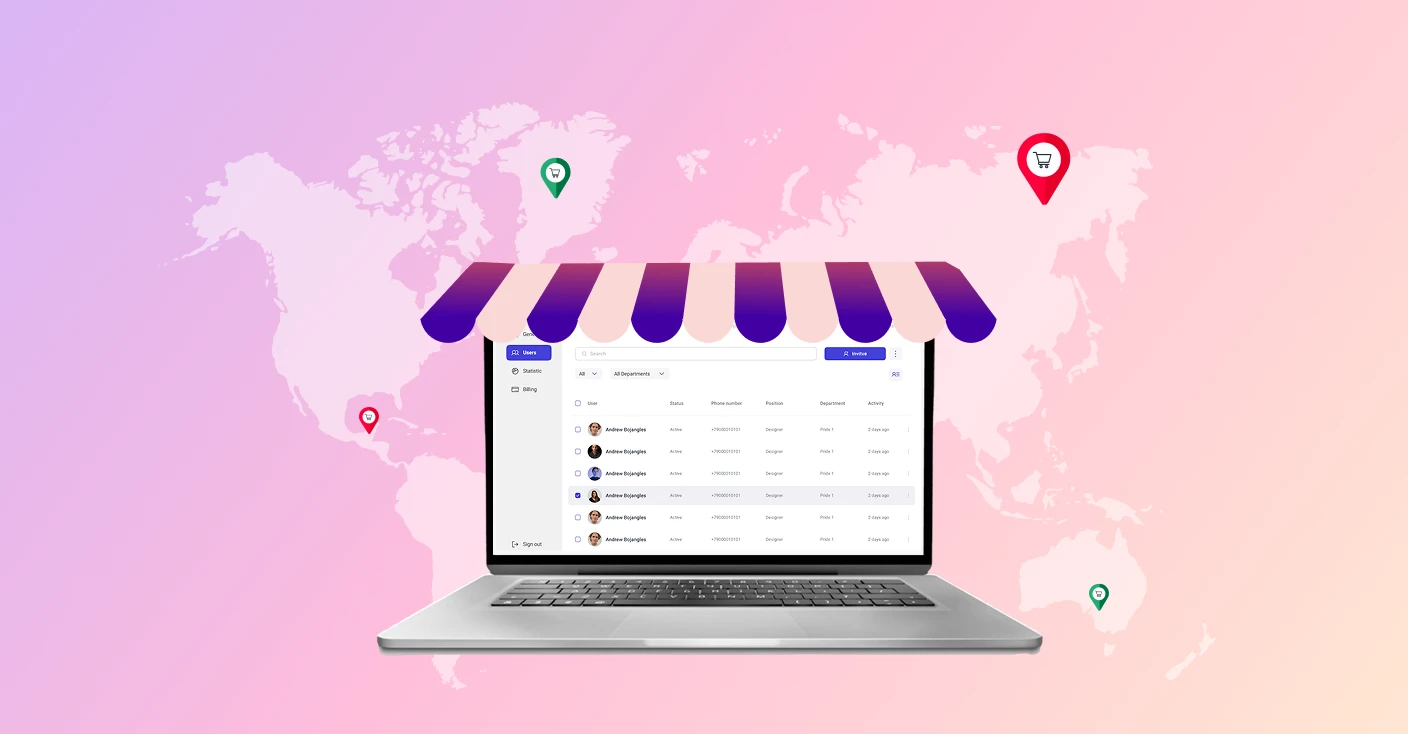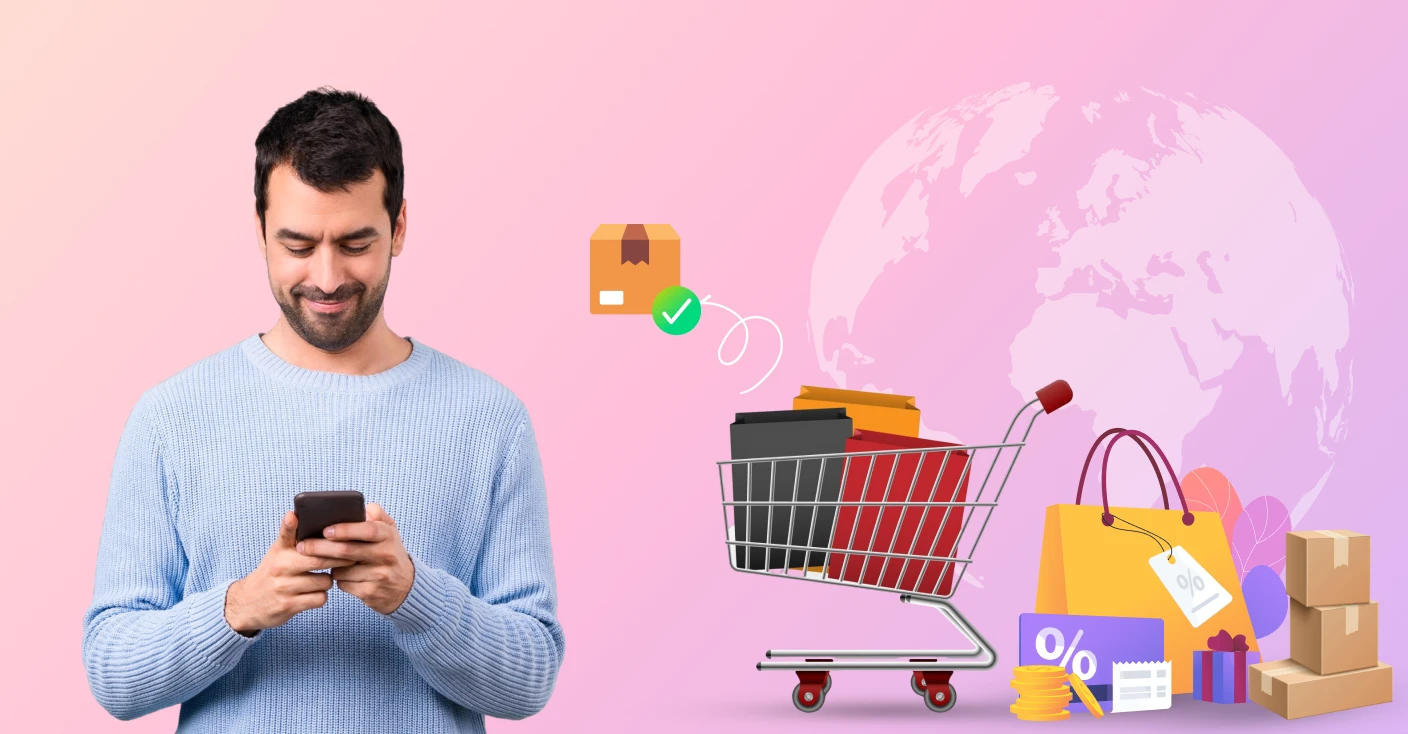How Cross-Border eCommerce Is Shaping the Future of Retail in Australia

Table of Contents
As global trade is bolstered by digital interactions, Australian retailers are looking more and more outward than inward, seeking out fresh opportunities.
Cross-border eCommerce is no longer on the horizon; it is today’s business fact. With increasing consumer demand for Australian products and tremendous advances in global logistics and international trade agreements, it has never been more appropriate for Australian retailers to diversify their products internationally.
Domestic markets are still profitable, but their constraints are increasingly apparent. The geographical remoteness, limited population base, and high expectations of domestic consumers all result in demanding growth in the domestic market.
Yet the world stage is vast: untapped markets, developing middle classes, and niche markets desperate for quality, authenticity, and ethical branding, precisely what Australian products are renowned for.
In this article, we will explore the key benefits of cross-border eCommerce for Australian retailers.
Why Global Expansion Is Now a Strategic Move
The global markets for the Australian product are expanding with time. In general, “Made in Australia” products are considered to be better and relevant. Particularly, the cosmetics, gourmet foods, childcare, fashion, and health sectors hold a great image.
Due to these factors, Australia can be a significant exporter, with a favourable image and growing purchasing power, the Australian brand can easily expand in Southeast Asia and the Middle East.
Concurrently, there is also a maturing home market. While the online store retailers are seeing domestic growth levelling off, they are seeking international customers to fuel the volume of sales and diversify risk.
For instance, selling into Australian and Asian markets, skin-care or supplements stabilises the revenue during the season and economic fluctuations.
What has made all this possible is the increased availability of overseas shipping. Australia Post, DHL, and scores of international logistics allies have streamlined routes and schedules. International fulfilment centres are now in place throughout Asia, Europe, and North America.
Such logistical advances have made it possible for even small-scale retailers to have a global customer base without disproportionate overheads.
Aside from this, Australian businesses that are export-oriented are also assisted by the free trade agreements and export facilitation schemes of the government.
With comparatively good terms initiated with China, Japan, the UK, ASEAN, and others, compliance and customs processes are easier than ever before.
Explore the Advantages of Going Cross-Border
Offshore export of your product has unique advantages over top-line growth. Most important, perhaps, is brand stature. Australia is widely perceived internationally to be green, clean, and ethical, an image that can be used to support high prices internationally.
Exporting diversifies the revenue stream and minimises exposure to one marketplace, making firms less vulnerable in times of downturn.
Another advantage is scalability. It is simpler now than ever before to open up stores in foreign markets.

With Shopify Markets or BigCommerce Global platforms, companies can scale currency, price, and language settings with the click of a button.
Such platforms make it easy to manage compliance, duties, and payment channels too, ensuring less friction for both the buyer and business.
In addition, selling to global consumers has been streamlined through hyper-targeted online advertising.
Today, sellers are able to find and communicate with specific groups in specific nations based on their behaviour, interest, and buying patterns, to put your message in front of where your customers are.
The Complications of International Selling
Even so, opportunities notwithstanding exist cross-border selling without challenges exists. There may be cultural and language barriers to affect how a brand is accepted. What will appeal to an Australian audience won’t do in Japan or Germany.
Retailers must invest time in becoming familiar with local tastes, translating content as needed, and adjusting packaging and sizing if required.
Regulatory compliance is another enormous task that needs to be handled. Various nations have various labelling requirements, packaging materials, and health claims for cosmetics, supplements, and foods.
In certain nations, non-compliance may lead to your shipments being detained or even rejected.
Logistics is also one of the areas that has to be dealt with utmost care. Although international shipping has been better, customs delays, returns, and lost packages still occur. It’s always better to select good carriers, provide a correct return policy, and clearly state the delivery time.
Pricing and taxation need to be managed carefully. Overseas shoppers are generally surprised by unexpected duties or confusing ultimate prices.
Retailers in Australia can make shopping easier for customers with the use of DDP (Delivered Duty Paid) delivery paradigms, or by incorporating duty calculators within the checkout process, to make it easy to enhance transparency and reduce cart abandonment.
Payment options are also an issue. Although credit cards have broad acceptance in Australia, Chinese and Southeast Asian purchasers and some European countries favour e-wallets, bank transfers, or buy-now-pay-later. Adaptation to the payment habits of the locale is essential for accelerating conversion.
Top Markets Where Australian Brands Are Winning
A number of markets are high-potential for Australian retailers. Health supplements, skincare products, and organic food all have a sizable market in China.
The country’s need for dependable, high-quality imports is growing, and Australian goods are well-represented on websites like Tmall Global and JD Worldwide.
The US is a market with high opportunities for natural products, niche fashion, and wellness brands. US consumers increasingly demand sustainable and ethically sourced products, where Australian companies have a competitive edge. With a common language and prevalent eCommerce culture, the US is a top export market.
Southeast Asia, namely Singapore, Malaysia, and the Philippines, is also experiencing a mobile commerce boom. They are culturally similar to Australia, technologically advanced, and fast-developing nations. Clean skincare, Australian-made babies’ products, and organic foods retail extremely well in the nation.
Europe and the UK are also within reach. Their customers prioritise transparency, sustainability, and authenticity, so they would welcome Australian companies that have an engaging brand story to share. The current free trade agreement with the UK also makes compliance and logistics easier.
Sharing a border with Australia, New Zealand and Canada are demographically aligned with Australia and represent high-demand lifestyle, food, and wellbeing markets for brands. They provide a low-risk first test market for those experimenting with cross-border models.
Laying the Groundwork for Cross-Border Success
For Australian businesses, cross-border eCommerce success begins with analysis. Knowing your market, home rules, and home competitors makes a difference. Google Trends, Similar Web, and platform analytics can be used to find demand and buying habits.
Then, the next step is to pilot test the market with a minimum viable product. This may be listing one or two of the best-selling SKUs in an overseas market like Amazon, eBay, or Etsy.
These sites already give instant access to new customer bases with little in terms of setup costs. If initial traction is promising, then one can build off of it, gradually adding more products or even opening up localised DTC storefronts.

Technology has a significant influence. Geo-specific content, localised currencies, and compliance tools are incorporated into solutions like Shopify and BigCommerce from the beginning.
For more advanced implementations, going through eCommerce agencies or hiring a localisation expert can simplify your worldwide deployment quite significantly.
Distribution and fulfilment must be optimised. Foreign warehoused third-party logistics providers (3PLs) can cut delivery times dramatically.
Most Australian brands utilise Hong Kong, the UK, or California as the point of fulfilment to service local markets effectively. Quick, guaranteed delivery aids in customer satisfaction and trust establishment.
Marketing must be localised in the same way for every region. Don’t just copy and paste your Australian campaigns; localise your message, use the correct social media channels, and even local influencers to establish credibility.
Storytelling, especially about your brand’s Australian background, can be a powerful global differentiation.
Preparing for What’s Next
The eCommerce landscape is changing globally. By integrating commerce (buying within social media or live video), sustainable packaging, and hyper-local customer support it will transform the market in 2025 and beyond. Australian retailers investing in these features will stand apart from the rest.
Sustainability is also gaining greater emphasis. With European consumers appreciating ethical sourcing more and exhibiting environmental consciousness, Australian brands privileged with green credentials should go full throttle on this positioning.
Digital technologies, for instance, AI for personalisation, chatbots offering 24/7 customer service in multiple languages, and dynamic pricing engines, allow brands to maintain service quality while scaling globally.
Conclusion
In West styles, there emerges a situation where cross-border eCommerce is no more a nice-to-have but a must-have for the long-term growth of Australian retailers.
The quality and values represented by Australia create an indelible impression on consumers all over the world, hence the time for considering straying beyond her shores.
The esteemed customer community awaits you there while you prepare to enter these choppy waters as a small business and a fully grown retailer wanting to balance sales.
To get a better understanding of cross-border eCommerce please connect with our eCommerce experts from Sydney, and sell more effortlessly.
FAQs
 Is a global business registration required to sell internationally?
Is a global business registration required to sell internationally?
No. In most markets, particularly when selling through channels like Amazon or Etsy, you do not have to register a domestic business entity. But you might be required to meet tax requirements and product regulations within your home jurisdiction based on the items you’re selling.
 How to start selling your product internationally?
How to start selling your product internationally?
Marketplaces is the best place to sell online. The most renowned examples are Amazon, eBay, and Etsy are from where the brands can start selling online. They offer low-barrier entry points and provide customer bases and shipping solutions. For a long-term brand, having your own store through Shopify or BigCommerce is best.
 How do I handle international returns?
How do I handle international returns?
Overseas returns are expensive. You address this by providing store credit, having defined return policies, or using 3PLs with in-country return centres. Reducing the probability of returns through the provision of clear product descriptions also solves this problem.
 Will customers trust an overseas brand?
Will customers trust an overseas brand?
Yes, particularly if your site appears professional, provides local payment and currency options, and ensures secure delivery. Reviews, testimonials, and secure checkout experiences also work equally well to establish trust.
 Why Magneto IT Solutions an ideal choice for cross-border eCommerce development?
Why Magneto IT Solutions an ideal choice for cross-border eCommerce development?
Magneto IT Solutions is a leading eCommerce web development service provider in Australia. We have more than 14 years of experience and 250+ international projects under a single belt, which enables you to build high-performance stores with multi-currency and multilingual support, logistics integration, and international compliance, so your brand can hit the ground running internationally.



